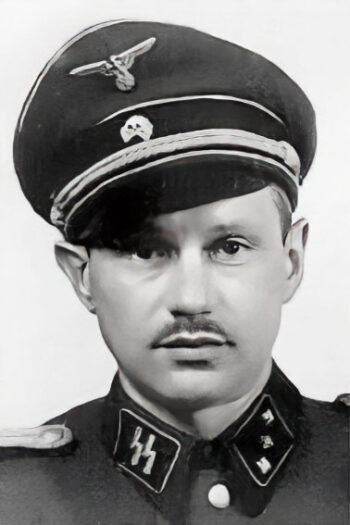Münch, Hans

Hans Münch (14 May 1911 – 27 Jan. 2002), SS Untersturmführer, was a physician who in June 1943 was assigned to the southeastern branch of the Hygiene Institute of the Waffen SS at Rajsko, a village near Auschwitz. In that role, he was involved in testing thousands of blood and stool samples of Auschwitz inmates to verify whether they had contracted typhus and/or whether they had cleared the typhus bacterium out of their system, hence could be released from the hospital. Münch was the only defendant who walked away with an acquittal from the Krakow show trial against former members of the Auschwitz camp staff.
Münch then testified at the Frankfurt Auschwitz Show Trial, and appeared as a “good SS man” during many a media event, convention and meeting. He confirmed the orthodox narrative of what was going on at Auschwitz, although he was never deployed there. He always maintained that he had kept a clean sheet.
In 1994, Münch was interviewed at length by a skeptical scholar. Here are some of the claims Münch made during that interview (for details, see Rudolf 2023b):
- Crematoria II and III were camouflaged as barns, and their chimney was detached from the building, standing separately, However, these buildings were neither camouflaged nor did they looked like barns, and their chimney was part of the building, not standing separately.
- The victims’ entry into the gas chamber, located on the ground floor, was through a large sliding barn door. However, the gas chamber is said to have been in the building’s basement, and access to it was through a normal-sized hinged door via a few steps.
- The victims entered the gas chamber through a door on one side, and were taken out dead through a different door at the opposite side. However, the alleged gas chamber of these buildings, their Morgue #1, had only one door.
- The victims were given towels and soap before entering the gas chamber. This most certainly would never have happened, considering the mess it would have created and the effort necessary to retrieve and clean these items afterwards. In addition, no one takes towels into a shower. When this was pointed out to Dr. Münch, he agreed, and stated that he never actually saw it anyway.
- The maximum capacity of this alleged gas chamber was 3,000 people. However, in this room of 210 m², that would have resulted in a physically impossible packing density of more than 14 people per square meter.
- Zyklon B was inserted through shafts by an SS man climbing onto a ladder to pour in the granules. However, in those buildings, insertion columns are said to have protruded only a little over the room’s roof, which was almost at ground level. Hence, no ladder would have been required.
- The victims’ bodies were put on rail carts running on tracks that left the chamber, ran through an outdoor space, and then entered into the crematorium. However, Morgue #1, the alleged gas chamber, was a basement room inside the crematorium. It was connected to the furnace room, not by rail tracks running partly outdoors, but by a freight elevator.
- During outdoor cremations, corpses were placed on large grates which had been brought from Treblinka or Majdanek. However, the orthodox narrative has it that no grates were used at Auschwitz during open-air incinerations at all. Bodies were simply put in pits and burned.
- The fuel used for open-air incinerations consisted of diesel or gasoline. However, liquid fuels can merely ignite other, solid fuels (such as wood or coke) and at most singe corpses, but can never incinerate them to ashes. The orthodoxy has it that wood was used as fuel.
- Münch confused Crematoria II and III with Crematoria IV and V.
- He claimed that he saw the Sonderkommando clean out the gas chamber, and later he denied ever seeing it.
- He said that he looked once into a gas chamber during a gassing; or maybe several times; or maybe he never saw anything.
- When pressed to give details about anything of what he reportedly experienced, he avoided any concrete answers, and ultimately admitted that he doesn’t know.
- When he was confronted with the many internal contradictions of his claims, and with the help of blueprints was made to understand that his description of the crematoria and gas chamber is completely wrong, he had to admit that he cannot remember anything reliably; that he gets everything mixed up; and that he is unable to distinguish his wartime impressions from what he has learned later.
To counter the devastating effect of this interview, the German news magazine Der Spiegel conducted their own rather brief and superficial interview with Münch, trying to entrap him with provocative statements (Schirra 1998). Starting with this interview, Münch increasingly displayed historical and personal confusion, making increasingly erratic and provocative statements leading to various prosecutions. (See Wikipedia for a detailed documentation on this.)

You need to be a registered user, logged into your account, and your comment must comply with our Acceptable Use Policy, for your comment to get published. (Click here to log in or register.)